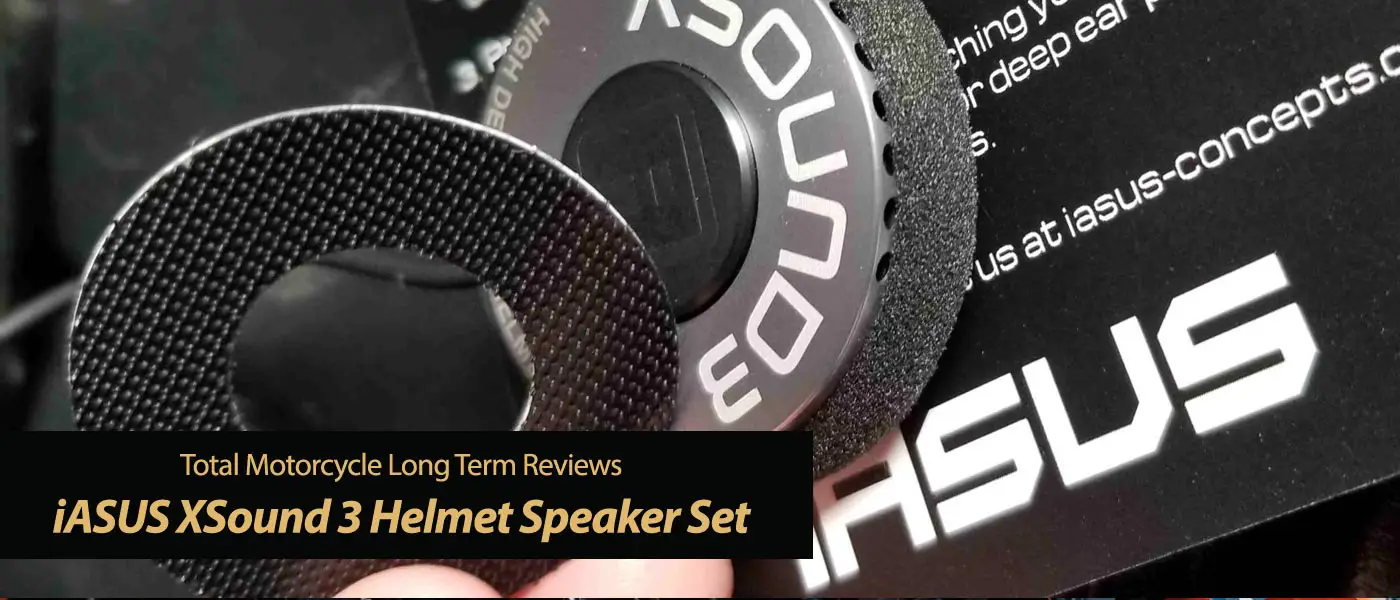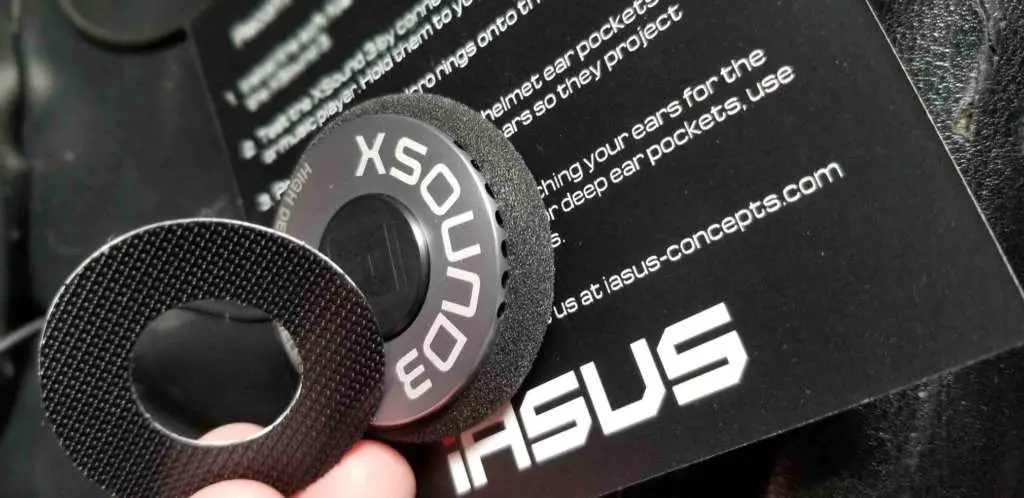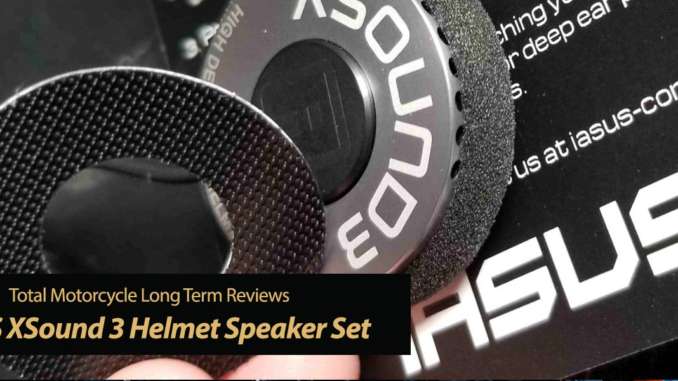
One of the latest offerings in the helmet audio space is the XSound 3 helmet speaker set by iASUS. With 45mm drivers, lightweight aluminum construction, and an ubiquitous 3.5mm pin, the kit ticks all the right boxes. But will having all the right features translate to the right performance? This October, iASUS was kind enough to send us a set for review. Let’s find out what’s what.
iASUS XSound 3 Helmet Speaker Set
| Reviewed By: | Eric Leaverton |
| Review Dates: | October 17 thru November 17th, 2019 |
| Price as Tested: | $119.00 USD |
Don’t forget to check out the video after you’re read the article!
Also, we’ve established an exclusive thread in our forums to leave comments on this article. You can find the thread HERE.
Overview
The XSound 3 set by iASUS is a speaker kit only, intended as an upgrade for your existing helmet audio set. It will work with any device that uses a standard 3.5mm output, which will include most any substantial helmet audio brand. The speakers are powered by the headphone jack of the device you attach them to, so there’s no external power source to integrate. In the kit is the speakers, wires, and stuff to install them in your helmet – that’s what you’re getting.
Unboxing the XSound 3 Kit
Here’s what’s in the box.
Speakers
Two of them, left and right channel. Round, 45mm across and 1mm thick. The lead for the left channel speaker is 7.5″ (20cm), while the right channel lead is 16″ (40cm). The wires are reinforced with Kevlar and can reportedly withstand 10 pounds of pull.
The speakers are attractive, glossy aluminum construction with bold white lettering and clean lines. Not that that matters, you’re going to stuff them inside your bucket. But it’s indicative of the overall quality of the product.
Extension Cable
I can’t imagine how you would ever need it, but the kit comes with an extension cord for the speaker cable. If you’re plugging into a cell phone in your jacket pocket, or some other device not otherwise attached to your helmet, you might have to use the extension. But if you’re using a helmet communicator, you wont need it.
Documentation
Instructions, advertising for other products from iASUS, warranty and replacement information.
Ear Wedge
I can’t guarantee that’s what iASUS calls this thing, but that’s what I call it. It’s a stiff leather panel about the size of a typical bookmark, with a hole in one corner for a key chain. So, you know how sometimes when you pull your helmet on, the tops of your ears fold down? Yeah, this device is for uncurling your ears. You slip it into the sides of your helmet, along your temple, and push your ears back up. The idea is to remove any complication that might adulterate your audio experience, including a folded earball.
Velcro Mounting Pads and Spacers
Two mounts, two spacers, four Velcro discs in total. Each disc is about the same size as one of the speakers, 45mm across and 1mm thick. They’re basic black so they match everything.
Speaker Body Velcro Rings
These are thin rings with Velcro on one side and peel-and-stick adhesive on the other. They have a hole in the center, and fit around the aluminum part of the speaker body so you can mount them to the included pads.
Comfort Covers
In case your particular installation is going to leave the speaker muffs exposed, iASUS included a pair of smooth fitted covers.
“…a motorcycle helmet “a challenging environment” for creating sound. No kidding right? Road noise, engine noise, limited space, crazy air gaps, weird acoustics..”
Installation
iASUS states in their literature that proper installation is vital to getting good sound from the XSound 3 set. You should center them against your ears as much as possible, and they should be as close as you can get them. Pro tip here, wearing a balaclava under your helmet will help with this, because it decreases air gaps.

I installed the XSound 3 speaker set in my LS2 Stream full-face helmet. My Cardo communicator was already installed, so swapping speakers was pretty simple. I removed the cheek pads, head sock and padded liner, unmounted the Cardo set and attached the new speakers to my existing pads. Wire lengths were more than sufficient for the size of my helmet, and the lead reached the plug on my Cardo easily. I used a little window insulating tape inside the helmet to keep the plug section secured.
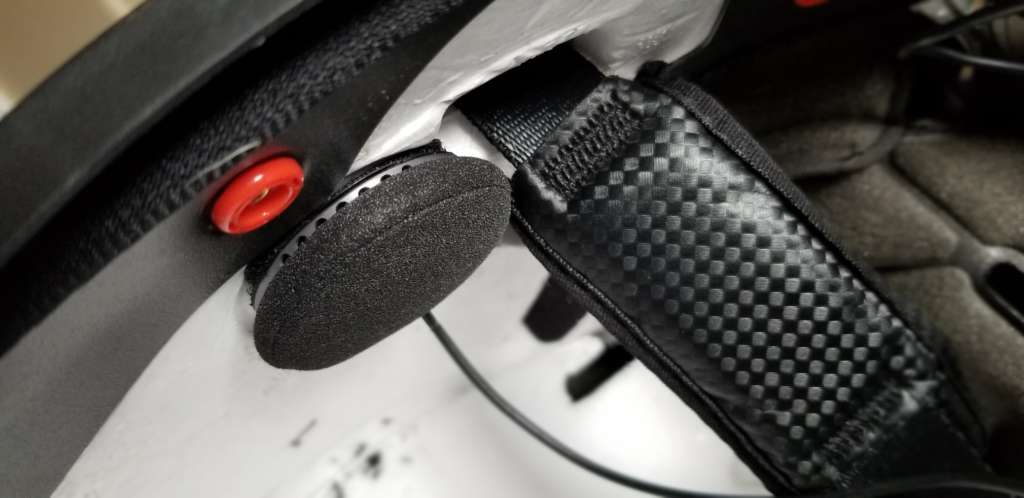
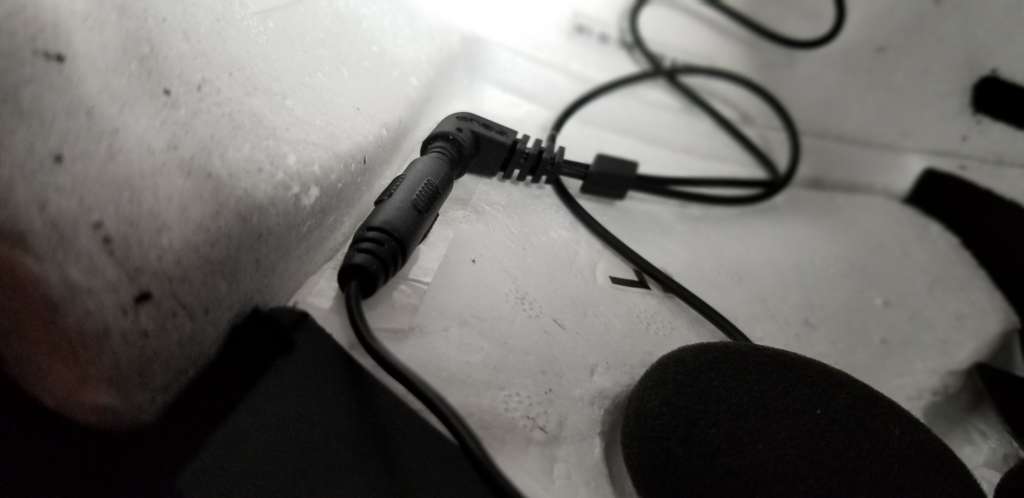
At first I didn’t use any spacers, but after a quick fitment test I decided to use a single spacer on each side. It did the trick. I can feel the bulge of the speakers against my ears, but they don’t press hard enough to be uncomfortable.
The First Listen
After installing the XSound 3 speakers in my helmet, I sat on my couch with my helmet, phone, and the now-disembodied JBL speaker set that came with my Cardo unit. I chose three songs with particular audio characteristics, and switched back and forth between the helmet and the JBL speakers.
The first song, “Rap God” by Eminem, has a heavy hip-hop baseline and fast, acute vocals. The second song was “Short Change Hero” by The Heavy, and it features a buttery smooth base vocalist and almost no mid or high range instrumentation. The final song was “Those Marching O’Neills” by Wicked Tinkers, which is Celtic folk music with a dizzying array of highland and lowland pipes, base and snare percussion, and the infamous didgeridoo. I chose these three songs because each of them is a real workout for a set of speakers, with lots of range.
The XSound 3 audio set, though, was up to the task. They produced excellent sound. Rich base without distortion, sharp treble without tininess, and clean delineation between the highs, mids, and lows. It took a lot of listening, but in the end I gave them the edge over the JBL audio set. That’s really saying something. In fact, sitting still on my couch with my helmet on, the XSound 3 set reproduced sound just as good as any quality stereo headphones I’ve ever owned. All that remained to be seen was how they sounded at speed.
“I was able to have a full conversation over the phone at 80mph on the interstate, something that I’ve never managed to do on a communicator before”
On the Road
First Ride
My first ride with the XSound 3 set was Tuesday the 22nd of October, at 4:45am. It was about 37°F, and I rode without earplugs since it was just a quick ride to work. I was listening to Avenged Sevenfold, and with my Cardo unit turned all the way up and the external volume on my Android phone also maxxed, it was loud.
The music was literally so loud in my helmet that I couldn’t hear myself talking. I also couldn’t hear any ambient road noise, and even at WOT I couldn’t hear any engine noise. This was at speeds between 35 and 55mph in an urban environment with traffic. It was loud enough that I actually turned my volume down to improve my situational awareness, which I’ve never had to do before. All the clarity from the couch test was still present too, despite the environment.
Second Ride
After work, I took the freeway home to see the how speakers performed at higher speeds. I was sure music would be audible at any speed, so I listened to the Cafe Racer Podcast because the spoken word can be a lot harder for speakers to recreate at volume. I was able to hear and understand clearly, even at 75-80mph in traffic.
Third Time’s a Charm
The coup de grâce came a few days later. I went out on a windy day to put the XSound 3 set through the ultimate test, an 80mph phone call with my earplugs in and balaclava on. Personally, I can’t imagine a more difficult thing for helmet speakers to do. The spoken word delivered through three layers of transmission obfuscation, then pushed through a padded balaclava and earplugs. Phone calls are the worst, and if you ride with a communicator you know what I mean.

Despite all those challenges, everything went fine. I was able to have a full conversation over the phone at 80mph on the interstate, something that I’ve never managed to do on a communicator before. I’ve always had to either pull over, duck behind my windshield, or at least slow down to have any sort of meaningful conversation over the phone.
Wait a Minute…
Before I throw down my final rating, I want to highlight two limitations to my experience with the XSound 3 kit. The first is that I only tested these speakers in one helmet, my LS2 Stream. So if you have a particularly loud helmet, your volume may not be on par with what I experienced. The second limitation is the device. I used these speakers with an Android smartphone, and then with a Cardo 4+ headset. Your results may vary depending on how your devices power their headphone jacks and process their audio files. So there are your grains of salt, take them as you like.
The XSound 3 – Conclusions
I once heard an industry professional describe a motorcycle helmet as “a challenging environment” for creating sound. No kidding right? Road noise, engine noise, limited space, crazy air gaps, weird acoustics.
Despite all that, the XSound 3 helmet speaker set by iASUS is fully rocking my challenging environment. Volume, clarity, and depth, my music sounds better than it ever has. It’s also expanded the envelope in which I can use my BT communicator, by allowing me to take phone calls at speed. If you’ve read my other reviews, you know that’s a benchmark for me. Changing my experience in a fundamental way. It was also very easy to install, and as compatible as a speaker set can be. And that funky ear wedge is a nice touch. It shows that iASUS genuinely wants you to have as good an experience as you can, and they’ve really researched the challenges to good helmet audio. Folded ears? We can fix that.
I debated for a long time whether this product takes a hit for it’s pricing. At $119 USD, it is literally the most expensive set of replacement internal helmet speakers I can find, until you get to custom-molded earbuds. The next most expensive kit is the JBL’s that I already had, at $80 USD. So it was something to consider. In the end though, they’re a modest one-time purchase that will improve the performance of several other products you’re heavily invested in already. That’s worth the premium price.
So, it’s our pleasure to award the XSound 3 High Definition Helmet Speaker set by iASUS with our highest honor, Editor’s Choice. Well done iASUS!
iASUS Concepts
Eric Leaverton is a management and labor relations specialist from the city of Harrisville, Utah, United States. He is an avid reader of fiction and non-fiction, and in his spare time enjoys riding motorcycles with his wife and raising their three children. Eric is also a product reviewer and field correspondent for Total Motorcycle Web. For more pictures, stories, and background, you can read his blog in the Total Motorcycle forums here:
To Ride An Iron Horse (link opens in new tab)


